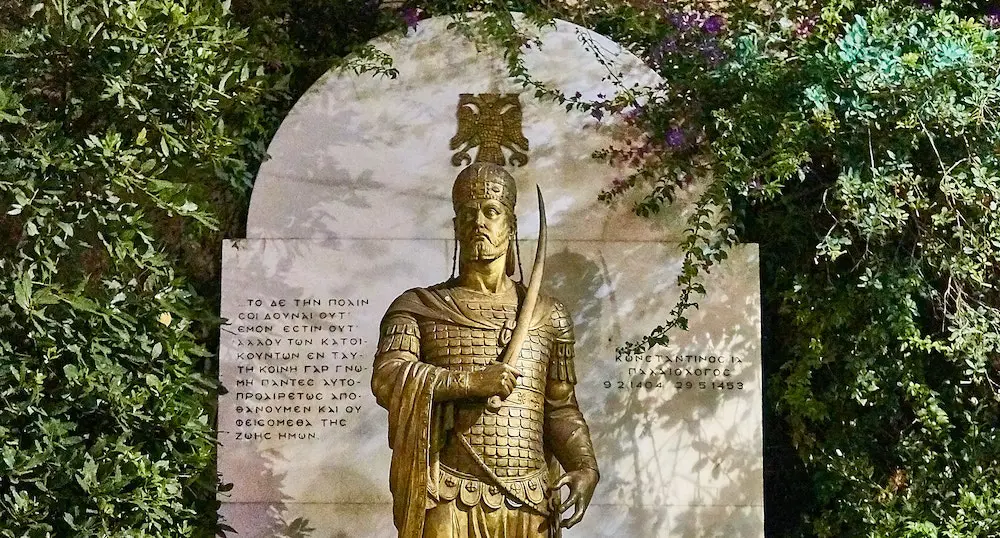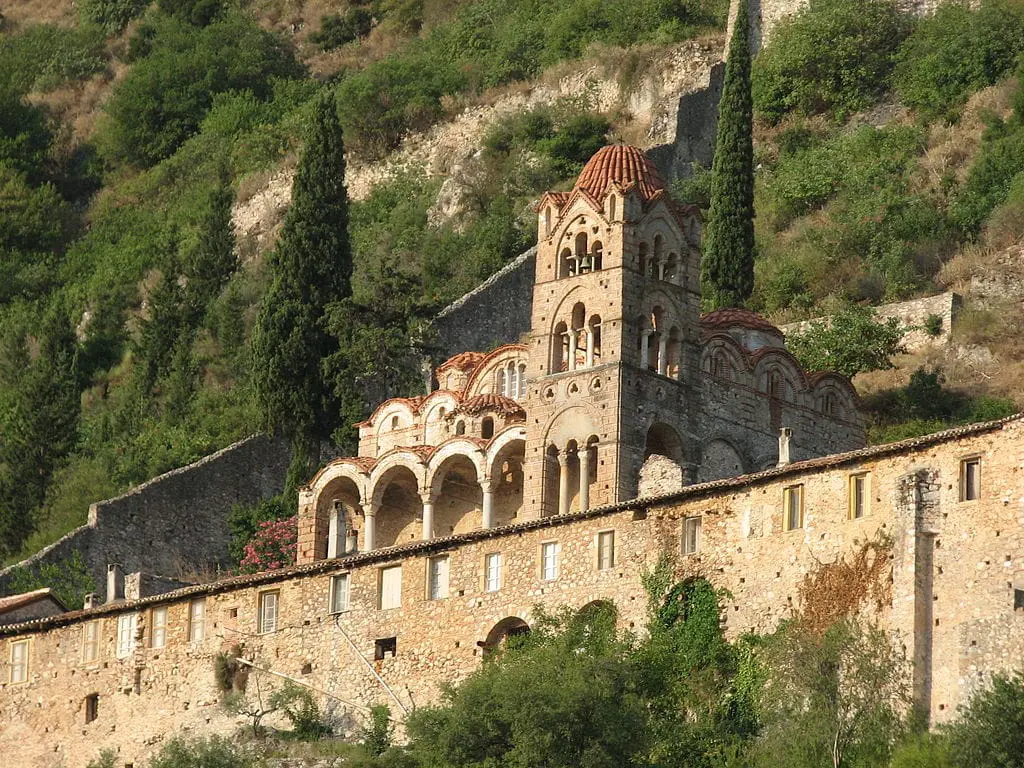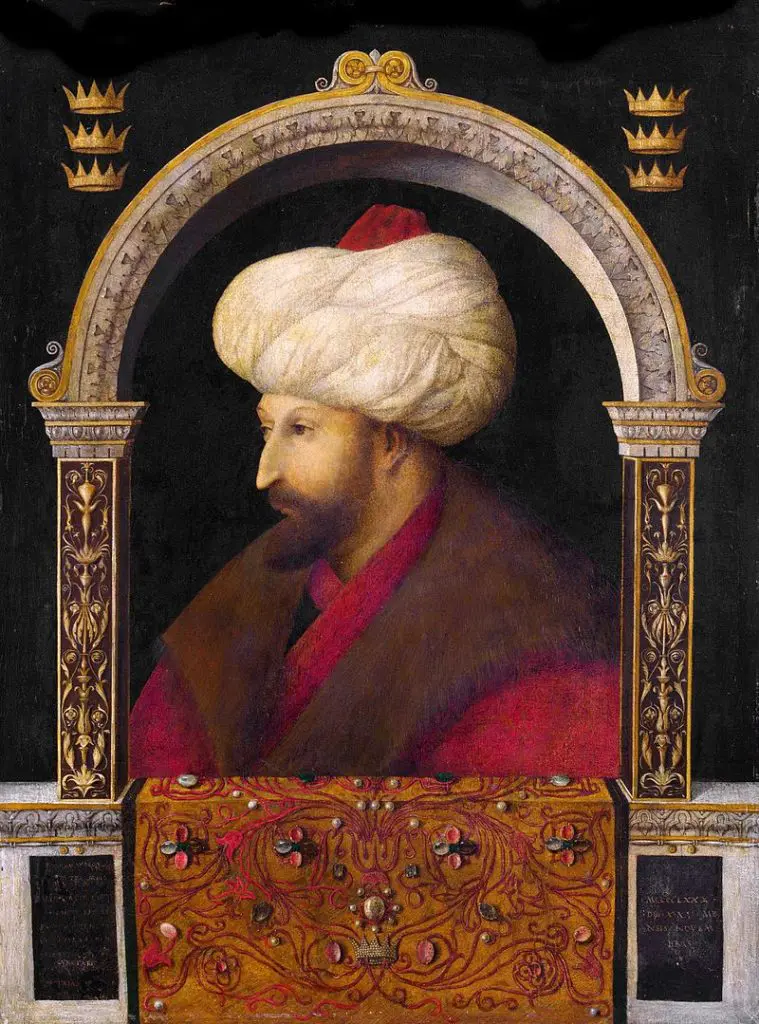
On May 29, 1453, the Ottoman army, led by Mehmed the Conqueror, seized Constantinople, putting a violent end to one of the longest-lasting empires in history. The fall of the great city also ended the life of the last emperor of Byzantium, Constantine Palaiologos.
The legends that sprang up around the Fall of Constantinople are a large part of Orthodox and Hellenic tradition. Even after the liberation from the Ottomans — and even today — there are Greeks who continue to believe that one day Constantinople will become Greek once again.
The legend of the “Marble Emperor”
Hence the arising of the legend of the “Marble Emperor” (Μαρμαρωμένος Βασιλιάς), Constantine Palaiologos.
The body of the emperor was tragically never found after the fall of the city, and his grave was never discovered.
Legend has it that Constantine XI Paleologos did not die at the hands of the Ottomans, but rather, he turned to stone, unable to bear to look at the beloved seat of his empire falling to the enemy.
So, according to the legend, one day the Marble Emperor will come back to life and take Constantinople back.
Perhaps the legend of the Marble Emperor was a tale that was spread among the defeated people in order to keep their hopes alive that the conquerors would not stay in the city for long.
The life of Constantine XI Palaiologos
Constantine XI Palaiologos was born on February 8, 1405, the eighth of ten children of Emperor Manuel II Palaiologos and his wife Elena Dragases, daughter of the Serbian ruler Konstantin Dejanovic.
Little is known about Constantine’s life before his rise to the throne of Byzantium. He was a skilled general and he and his brothers commanded the Despotate of Mystras, in Moreas, today’s Peloponnese.

In 1427–1428, Constantine and his brother Ioannis fended off an attack on the Moreas by Carlo II Tocco, the ruler of Epirus, and in 1428 Constantine was proclaimed as Despot of the Moreas, to rule the province together with his older brother Theodore and his younger brother Thomas.
Together, the Palaiologos brothers extended Byzantine rule to cover almost the entire Peloponnesian peninsula for the first time since the Fourth Crusade, more than two hundred years prior.
They rebuilt the ancient Hexamilion wall, which defended the peninsula from outside attacks, and in 1444-1446, Constantine personally led a campaign into Central Greece and Thessaly in an effort to extend Byzantine rule further into Greece.
The Byzantine Empire was in decline when Constantine was proclaimed emperor on January 6, 1449, after the death of his brother Ioannis. It was a time when the Ottomans were on the rise, taking over land that had been under Byzantine rule.
Constantine made an effort to unite the Orthodox Church with the Catholic Church in the hope that the Catholics would provide military aid to stop the advance of the Ottomans. But this stratagem was sadly to no avail.
Four years after assuming power in Byzantium, Constantine Palaiologos was called upon to counter the third siege of Constantinople by the Ottomans — a siege that began on April 15, 1453 and ended in the Fall of the city on May 29 of the same year.
The last battle and death of Constantine XI Palaiologos
It is said that the last emperor of Byzantium had realized that he did not have enough military power to prevent the conquest of Constantinople by the army of Mehmed the Conqueror.

Shortly before the fall, Palaiologos visited Hagia Sophia, where he took Holy Communion. He then said his final goodbyes to his family before going into battle.
When the Ottomans invaded the city, some advised Palaiologos to flee to save his life.
However, testimonies say he insisted on staying — and he undoubtedly fought until the bitter end. He was killed in battle, apparently being beheaded by an Ottoman soldier.
It is said that Mehmed II ordered a search for his body and when it was found, he mourned and buried the remains. However, Palaiologos’ grave was nowhere to be found in Constantinople.
The “lost” tomb of Constantine XI Palaiologos, last Byzantine Emperor
In the years that followed, there were many reports about the place where Constantine must have been buried; however, the reports that his body was buried inside Hagia Sophia cannot be verified.
The most likely explanation is that for the first two years after the Fall of Constantinople, the Patriarch took refuge in the temple of the Holy Apostles, which he used as its seat, and the last emperor was buried there.
The church, however, was later abandoned by the Christians, with Mehmed II ordering it to be demolished to make way for the Fatih Mosque.
If the bones of Palaiologos were indeed in the temple of the Holy Apostles, they were most likely lost after its demolition or were perhaps moved to another location.
Reports indicate that the remains of the Apostles and members of royal families were placed in two crypts to the right and left of the Church of Saint Theodosia, which was later converted into a Muslim mosque called the Gul Mosque.
However, it cannot be ascertained in any way at the present time if the bones of the great Emperor Constantine Palaiologos are indeed there.
See all the latest news from Greece and the world at Greekreporter.com. Contact our newsroom to report an update or send your story, photos and videos. Follow GR on Google News and subscribe here to our daily email!



